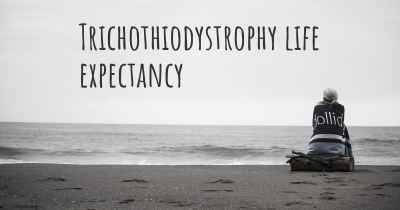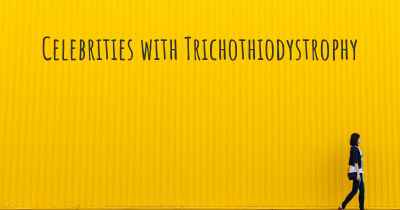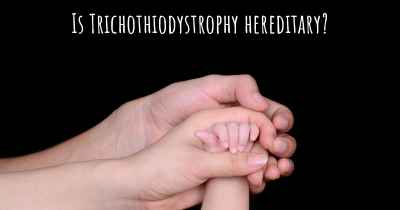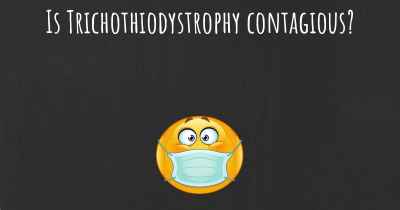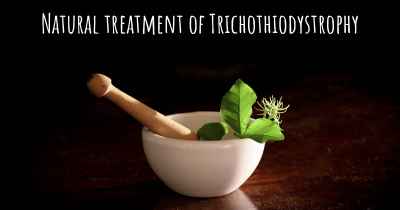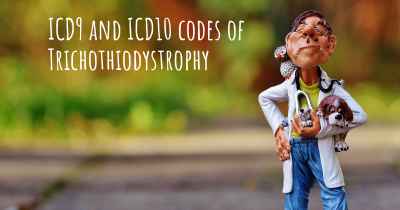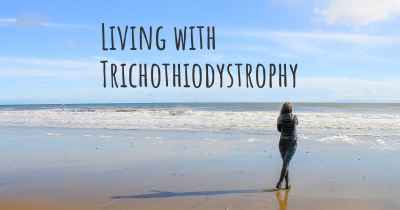What is the history of Trichothiodystrophy?
When was Trichothiodystrophy discovered? What is the story of this discovery? Was it coincidence or not?

Trichothiodystrophy (TTD) is a rare genetic disorder that affects the hair, skin, and nails. It is characterized by brittle hair, intellectual disabilities, and various physical abnormalities. TTD was first described in medical literature in the 1970s, and since then, significant progress has been made in understanding its causes and manifestations.
The history of Trichothiodystrophy dates back to the early 1970s when researchers began noticing a group of patients with similar symptoms. These symptoms included brittle hair, intellectual disabilities, short stature, and facial abnormalities. Initially, the condition was referred to as "Tay syndrome" after the first patient described with these symptoms. However, it was later renamed Trichothiodystrophy due to the characteristic hair abnormalities observed in affected individuals.
Over the years, researchers have made significant strides in understanding the underlying causes of TTD. It was discovered that TTD is primarily caused by mutations in genes involved in DNA repair and transcription. One of the most well-known genes associated with TTD is the ERCC2 gene, also known as XPD. Mutations in this gene impair the function of the protein it encodes, leading to defective DNA repair mechanisms.
Further research has revealed that TTD can be inherited in an autosomal recessive manner, meaning that both parents must carry a copy of the mutated gene for their child to be affected. This mode of inheritance explains why TTD is relatively rare, as both parents must be carriers for the disorder to manifest in their offspring.
As our understanding of TTD has deepened, so has our knowledge of its various subtypes. There are currently at least seven known subtypes of TTD, each with its own distinct genetic cause and clinical features. These subtypes include TTD-A, TTD-B, TTD-C, TTD-D, TTD-E, TTD-F, and TTDN1.
TTD-A is the most common subtype and is caused by mutations in the ERCC2 gene. It is characterized by brittle hair, intellectual disabilities, short stature, and a range of physical abnormalities such as facial dysmorphism and skeletal defects.
TTD-B is caused by mutations in the ERCC3 gene and shares many similarities with TTD-A. However, TTD-B is often associated with more severe intellectual disabilities and a higher risk of developing cancer.
TTD-C is caused by mutations in the GTF2H5 gene and is characterized by brittle hair, intellectual disabilities, and photosensitivity. Individuals with TTD-C may also experience eye abnormalities and have an increased risk of developing skin cancer.
TTD-D is caused by mutations in the MPLKIP gene and is associated with intellectual disabilities, short stature, and brittle hair. Additionally, individuals with TTD-D may have abnormalities in their nails and teeth.
TTD-E is caused by mutations in the RNF113A gene and is characterized by brittle hair, intellectual disabilities, and short stature. Individuals with TTD-E may also have facial dysmorphism and skeletal abnormalities.
TTD-F is caused by mutations in the GTF2E2 gene and shares many similarities with other TTD subtypes. It is characterized by brittle hair, intellectual disabilities, and various physical abnormalities.
TTDN1 is caused by mutations in the MPLKIP gene and is associated with intellectual disabilities, short stature, and brittle hair. Individuals with TTDN1 may also have abnormalities in their nails and teeth.
While there is currently no cure for Trichothiodystrophy, ongoing research aims to improve our understanding of the disorder and develop potential treatments. Management of TTD typically involves addressing the specific symptoms and complications experienced by each individual. This may include regular monitoring for cancer, providing supportive care for intellectual disabilities, and implementing measures to protect the skin and hair from damage.
In conclusion, Trichothiodystrophy is a rare genetic disorder that affects the hair, skin, and nails. It was first described in the 1970s and has since been associated with mutations in genes involved in DNA repair and transcription. There are several subtypes of TTD, each with its own distinct genetic cause and clinical features. While there is currently no cure, ongoing research aims to improve our understanding of TTD and develop potential treatments to alleviate its symptoms.
